- Home
- L'amour, Louis
the Shadow Riders (1982) Page 15
the Shadow Riders (1982) Read online
Page 15
Texas is such a large state that it has many different varieties of terrain and of foliage, which most people don't realize. The Panhandle is very flat, very level, and has short grass plains. In East Texas down by the Gulf Coast there's a lot of timber. Up in the northeast corner there's what they call the Piney Woods area, and this is a very heavily timbered area, with a lot of swamps on the Sulphur River and Caddo Lake; but down along the Gulf Coast there are patches of wood, patches of thicket, and some pretty good-sized timber, but a lot of it is smaller.
Then, of course, there are the long islands that parallel the Gulf Coast - Padre Island, for example, and St. Joseph Island, which is right opposite the place where I had the Travens. And my novel Matagorda takes place in that area. These are long, long, very narrow islands, like long sandbars, that parallel the Coast and protect it to some extent from the bad storms of the Gulf - the hurricanes - although the hurricanes have broken through. There was a town called Indianola, which I wrote about in Matagorda, and Indianola was twice wiped completely off the map. And of course Galveston was once practically wiped off the map. Then they built the Galveston seawall to protect them, and since then it's done a pretty good job.
Q: The whole Gulf area, which you concentrate on in The Shadow Riders, seems to be such a special area.
A: It is. It's completely different. There are some long, beautiful beaches there and heavy, big sand dunes and, in some places, a lot of forest behind them. In the area I was writing about, there were. Some of that forest has been burned over or cut over, but you find some large timber and lots of very thick brush.
Some of the early brushpoppers among the cowboys were from that country and also from what's called the Big Thicket, which is some distance from there but is the same kind of terrain to some extent. Down in that country are the longhorn cattle, and this is where the cattle business really originated. People usually think of West Texas with regard to the cattle business; that didn't happen until later. The real longhoms came out of East Texas, right down along the Gulf Coast. They lived back in that brush. They were wild animals, fierce as they could be, and the cowboy chasing them had to wear leather chaps and leather jackets because he had a horse that was trained to follow a steer. When a steer charged into the brush, the horse went after him. Many a cowboy lost an eye or lost an arm.
Q: How did the Travens come to Texas?
A: The Travens came to Texas from Kentucky, actually. They had settled there before the Civil War. And, of course, in my story the two boys - Dal, who fought for the South, and Mack who fought for the North - are returning home after the war. There was no friction between them because they fought for opposite sides; they were people who thought you should fight for what you believe. And they believed in opposite ways, so they fought in opposite ways, but once the war was over they dropped their animosities and came back home together.
After the war, as in every war, the armies broke up and the men started going home. In those days it wasn't organized like it is now: the discharge of soldiers is usually pretty carefully organized now, and they're released to go home at intervals. Then, the whole army was just suddenly turned loose, and they were given a horse and a gun by orders of Abraham Lincoln - the Southerners were, at least - and they started back home.
Well, in the South there was nothing; it was desolate because most of the plantations had been devastated and a lot of the houses burned down. The property there would eventually be of great value, but at that time it wasn't, and there was no help to be had. The slaves were gone because they'd been freed, of course, and there was no other help to be hired and no money to pay them with even if you could have gotten help. So a lot of these young men just broke off and went west rather than fight that very difficult fight of being in poverty for a number of years before they got back on their feet. They went west to try to find what they could out there - in the cattle business or in gold mining or in whatever.
Some of these men, of course - the worst of them - became outlaws. There were others, who'd never fought in the war actually, but who'd fought along the fringe of the war, like Jesse James and the Quantrill Raiders. They didn't really take sides in the war, they just took advantage of it to raid and to rob, and a number of such men banded together and headed off across Texas. Then there was another group of very legitimate men who didn't believe the war should have been lost and wanted to fight again and didn't want to live under the Union, so they went south to join Emperor Maximilian in Mexico and fight with him.
Q: This would be a character like Colonel Ashford in The Shadow Riders?
A: Yes. Only Ashford had serious deficiencies in his character. He had a picture of himself as doing that sort of thing, but actually he didn't have the nobility, he didn't have the strength of character to do that. Secretly he was a small man at heart and something of an outlaw, a misfit - I don't mean a man who was against the Establishment, just a man who had something wrong inside, who was kind of rotten inside, but it hadn't showed itself yet.
Q: Was it unusual for families to be split right down the middle the way Mac and Dal were?
A: All over the South and the North it was the same way, principally in states like Kentucky and Virginia and Ohio and Pennsylvania. You found people from Pennsylvania and Ohio riding south to join the Confederate army, and you found people from Virginia and Kentucky and even from Tennessee riding north to join the Union army, and it was a great split. Slavery, with most of them, was not the issue. In the South it was mostly states' rights and the right to do what they wanted to do, regardless of the federal government. There were a lot of questions and issues there. It was far from a simple thing, far from a simple war.
Q: There's the very powerful scene when Mac and Dal come upon the little girl and the little girl asks if Mac is her daddy. There were a lot of men who didn't come home from that war. How did that affect the women and the families?
A: Well, it left them pretty desolate. In many cases they had been struggling along, eking out an existence on small ranches or farms, hoping for the husband to get back and just waiting for that day. And then when he didn't come back, of course, they had to readjust completely, and many of them just didn't make it. Some of them went back to relatives, some of them struggled, some of them married someone else eventually, but they had to find a way for themselves, and it was far, far from easy because in those days a man and a woman were a team. On a ranch or on a farm each one had specific duties and things to be done, and if you lacked one or the other you were crippled, you were really crippled, because a woman couldn't do it all and neither could a man.
Q: You seemed to have a lot of fun as you were writing about Uncle Jack Traven.
A: I did. I enjoyed him very much. Uncle Jack Traven was one of the black sheep of the family. He was kind of a wild character who took off on his own. There were a lot of Jack Travens around at the time. They were fellows who basically were good men, but they had gone off the deep end a little bit and maybe shot the wrong fellow or rustled a few head of cattle when they needed to get drunk or something like that.
Q: The other black sheep of a family is Martin Connery, another fascinating character. Would it be fair to describe him as a pirate rancher?
A: Yes, he was. You know, the biggest ranch in Texas is the King Ranch, and what a lot of people don't know is that Richard King, who established that ranch, was a steamboat captain. He had come down there and worked on the Rio Grande River for a while, saw his opportunity, and took land there. And this was not at all an unusual thing: a lot of these ship captains and steamboat captains were the first ones on the site. Jean LaFitte was a famous pirate who operated out of New Orleans in that area. His actual base was near Galveston, and he had been along that coast quite a bit, so anybody who was associated with him would know a good deal of the Texas coast and what its opportunities were. A lot of these men saw the chance there, and also they saw these millions of cattle running free. There were no brands on them at all in those days; they bred like rab
bits back there in that thicket, and they were all over the area.
Q: Was it a tough adjustment to go from the sea to being a rancher?
A: Not really in those days because there were no restrictions on a rancher. He could just take up land and then reach out and grab everything in sight. A lot of the early ranchers were "pirates" in actuality.
Q: In the book there is also the scene where some of the renegades come into the town and think they're going to terrorize the town. One of them brags that they have thirty men and is quickly told three hundred are there in town ready to stand them off. Was that a fairly common occurrence?
A: Yes, it was. You see, everybody in those days had guns, and everybody carried guns, and everybody was ready for trouble. They had law, but they would have to send for it sometimes. The Texas Rangers might have to ride a number of miles to get there to help, and by that time most of the damage would be over, so people had to learn how to defend themselves. That part of the coast had been raided by the Comanches time and again - and prisoners taken away and cattle and horses driven off - so they were ready, they were ready for trouble. Victoria, for example, which I mention in the story, had been raided and practically decimated by Comanches a couple of times, so every man there was armed and he knew where his weapon was, he was ready to defend himself. So these fellows had been very foolish to try to take a town like that.
Q: You mentioned that Kate Connery would help out at times during the Indian attacks. The women would have to pitch in right along with the men during such attacks?
A: Very definitely. I had an ancestor, a great-grandmother who nursed a child with a rifle across her knees. This was not an unexpected thing in those days. They had to take care of themselves. Sometimes the husband would be away - he'd be out herding cattle, or driving cattle off to a market, or gone into town for the supplies - and the attack would come when he was gone, so the woman would close and bar the door and load the muskets and defend the place.
Q: Do you see a connection between the Travens and the Sacketts? Do you think they would have gotten along?
A: I think the Sacketts and the Travens would have gotten along very well. They had a number of qualities in common. You see, a lot of the men did have qualities in common in those days because the country itself and the conditions under which they lived had a way of weeding out the weak ones, so the men who remained were usually pretty strong men, pretty capable men.
I don't necessarily mean strong physically - though they usually had stamina and were very rugged - but I mean strong in character. Character was the essence of the thing with both men and women. If they had the inner stamina to fight back, to resist, to take care of themselves, then that individuality made them stand on their own feet without leaning on anybody or anything, and these men had that. Some of the Sacketts, like William Tell Sackett for example, were veterans of the Civil War as the Travens were, and many of them had lived through it, and had lived through various Indian attacks.
Q: There's also a strong sense of family that seems common to the Travens and the Sacketts.
A: That was much more common in the old days than it is now, although I think we're coming back to it. A lot of people think the family's going downhill. I don't think so at all. I think, the very economic situation we're going into now, with electronics and everything of that kind, that people will be living more at home than they ever did. I venture to say that in ten years at least 40 percent of the working force will be working at home and never leaving the home to go to work, and I think this will bring it all back together again. But in those days the family was a unit, you see, and they worked together: they milked the cows, they made the hay, they did the hunting, they did the work hi the fields, and they each had their own role.
Q: The family ties also seem to have been strong when the families were separated. When the Sacketts would go off - when Dal and Mac go off to war, for example, and then later meet, they just take right up again. That seems to be something we've lost.
A: Yes, we have to a great extent, and it's too bad because it gave a whole lot of unity and a whole lot of strength to the country itself.
--------------------------------
Qvadis
Express Reader Edition
www.qvadis.com
-------------------------------

 Last Stand at Papago Wells (1957)
Last Stand at Papago Wells (1957) the Trail to Crazy Man (1986)
the Trail to Crazy Man (1986) Shalako (1962)
Shalako (1962)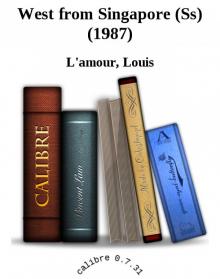 West from Singapore (Ss) (1987)
West from Singapore (Ss) (1987) Last Of the Breed (1986)
Last Of the Breed (1986) Dark Canyon (1963)
Dark Canyon (1963) Bendigo Shafter (1979)
Bendigo Shafter (1979) Riding for the Brand (Ss) (1986)
Riding for the Brand (Ss) (1986) Guns Of the Timberlands (1955)
Guns Of the Timberlands (1955) the Iron Marshall (1979)
the Iron Marshall (1979) the Broken Gun (1967)
the Broken Gun (1967)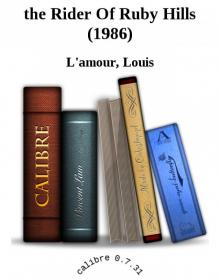 the Rider Of Ruby Hills (1986)
the Rider Of Ruby Hills (1986)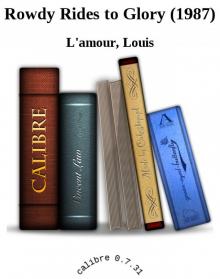 Rowdy Rides to Glory (1987)
Rowdy Rides to Glory (1987) the First Fast Draw (1959)
the First Fast Draw (1959) Utah Blain (1984)
Utah Blain (1984) the Quick and the Dead (1983)
the Quick and the Dead (1983) Tucker (1971)
Tucker (1971)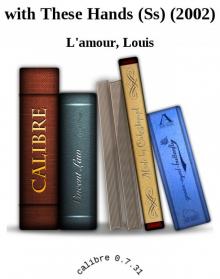 with These Hands (Ss) (2002)
with These Hands (Ss) (2002) May There Be a Road (Ss) (2001)
May There Be a Road (Ss) (2001) Night Over the Solomons (Ss) (1986)
Night Over the Solomons (Ss) (1986) the Haunted Mesa (1987)
the Haunted Mesa (1987) Matagorda (1967)
Matagorda (1967) End Of the Drive (Ss) (1997)
End Of the Drive (Ss) (1997) Riders Of the Dawn (1980)
Riders Of the Dawn (1980) the Key-Lock Man (1965)
the Key-Lock Man (1965) Taggart (1959)
Taggart (1959)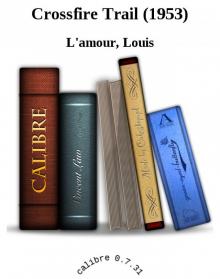 Crossfire Trail (1953)
Crossfire Trail (1953) Education Of a Wandering Man (1990)
Education Of a Wandering Man (1990) the Proving Trail (1979)
the Proving Trail (1979) Kilrone (1966)
Kilrone (1966) the Man from Skibbereen (1973)
the Man from Skibbereen (1973) the Tall Stranger (1982)
the Tall Stranger (1982) Bowdrie (Ss) (1983)
Bowdrie (Ss) (1983) Catlow (1963)
Catlow (1963)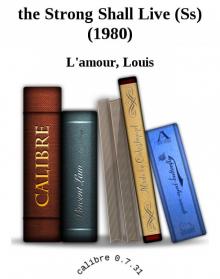 the Strong Shall Live (Ss) (1980)
the Strong Shall Live (Ss) (1980) Fallon (1963)
Fallon (1963) the Empty Land (1969)
the Empty Land (1969) the Cherokee Trail (1982)
the Cherokee Trail (1982) Beyond the Great Snow Mountains (Ss) (1999)
Beyond the Great Snow Mountains (Ss) (1999) Kid Rodelo (1966)
Kid Rodelo (1966)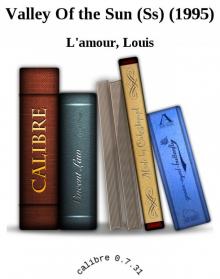 Valley Of the Sun (Ss) (1995)
Valley Of the Sun (Ss) (1995) Radigan (1958)
Radigan (1958) Law Of the Desert Born (Ss) (1984)
Law Of the Desert Born (Ss) (1984) Chancy (1968)
Chancy (1968) the Burning Hills (1956)
the Burning Hills (1956) Son Of a Wanted Man (1984)
Son Of a Wanted Man (1984) Killoe (1962)
Killoe (1962) Showdown On the Hogback (1991)
Showdown On the Hogback (1991) the Shadow Riders (1982)
the Shadow Riders (1982) to Tame a Land (1955)
to Tame a Land (1955) Brionne (1968)
Brionne (1968) Off the Mangrove Coast (Ss) (2000)
Off the Mangrove Coast (Ss) (2000) Showdown at Yellow Butte (1983)
Showdown at Yellow Butte (1983) How the West Was Won (1963)
How the West Was Won (1963) Smoke from This Altar (1990)
Smoke from This Altar (1990) Comstock Lode (1981)
Comstock Lode (1981) Flint (1960)
Flint (1960) Hondo (1953)
Hondo (1953) Reilly's Luck (1970)
Reilly's Luck (1970) No Trouble for the Cactus Kid
No Trouble for the Cactus Kid Bowdrie's Law (Ss) (1983)
Bowdrie's Law (Ss) (1983) the Sackett Companion (1992)
the Sackett Companion (1992) the Man Called Noon (1970)
the Man Called Noon (1970) Buckskin Run (Ss) (1981)
Buckskin Run (Ss) (1981) Down the Long Hills (1968)
Down the Long Hills (1968) Kiowa Trail (1964)
Kiowa Trail (1964) Long Ride Home (Ss) (1989)
Long Ride Home (Ss) (1989) Lonigan (Ss) (1988)
Lonigan (Ss) (1988) Dutchmans Flat (Ss) (1986)
Dutchmans Flat (Ss) (1986) Passin' Through (1985)
Passin' Through (1985) the Hills Of Homicide (Ss) (1987)
the Hills Of Homicide (Ss) (1987) Silver Canyon (1956)
Silver Canyon (1956) the Californios (1974)
the Californios (1974) Where the Long Grass Blows (1976)
Where the Long Grass Blows (1976) Callaghen (1972)
Callaghen (1972) Under the Sweetwater Rim (1971)
Under the Sweetwater Rim (1971) the Lonesome Gods (1983)
the Lonesome Gods (1983) Heller with a Gun (1955)
Heller with a Gun (1955)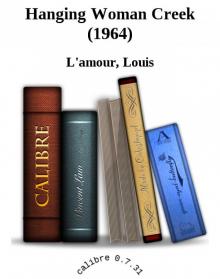 Hanging Woman Creek (1964)
Hanging Woman Creek (1964) High Lonesome (1962)
High Lonesome (1962) There's Always a Trail (1984)
There's Always a Trail (1984) the High Graders (1965)
the High Graders (1965) Conagher (1969)
Conagher (1969) from the Listening Hills (Ss) (2004)
from the Listening Hills (Ss) (2004) Monument Rock (Ss) (1998)
Monument Rock (Ss) (1998)